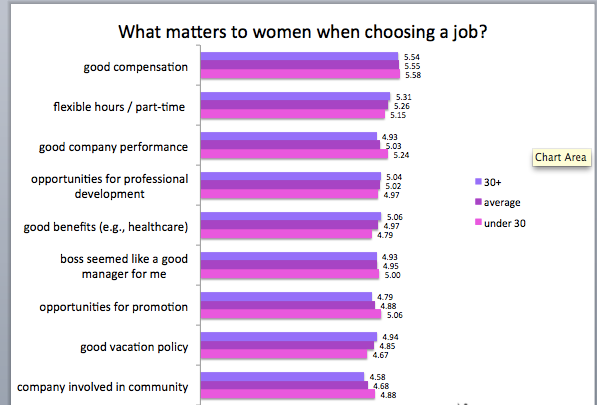
Sadly, for many women I’ve spoken to, it feels like the lesson of 2016 is that the glass ceiling is lower than we all thought. That lesson may or may not hold true in the political realm. But I’ve spent the year paying close attention to the issue of gender diversity in the corporate sector, and I’d argue that 2016 was actually a great year for gender equality in Corporate America. The groundwork has been laid for even more good progress in 2017, and I’m optimistic that the private sector can set a new standard through which greater gender equality will come to women in our country, and even maybe one day to the government itself.
Here are five highlights of the year in corporate gender diversity that I hope will not be forgotten or obscured by the political climate:
1) Mary Barra
The coolest, most ambitious, most dynamic CEO of a public company these days is a woman: Mary Barra, CEO of General Motors. Barra is an engineer by training who has driven GM to record profits, and is working to rebuild a decades-old corporate culture to compete with Silicon Valley innovation. 2016 marked her most ambitious year yet ― with her announcement of a major investment in ride-sharing app Lyft. Since Barra never stops, this working mother also makes time to advocate for STEM education for young girls. No wonder, Fortune Magazine labeled her its Most Powerful Woman 2016 for the second year running.
Barra is living proof that a woman can successfully take the helm of a hard-core industrial manufacturing company - and do so gracefully, impressively and without scandal or fanfare. Although women still hold only only 23 of the 500 CEO roles in the S&P 500 (4.6%), Barra’s high profile position should easy the way for more women to take on the top role.
2) The Parental Leave Arms Race
Maternity and/or parental leave is a clear-cut area in which the actions of Corporate America far outshine those of the U.S. Government in terms of support for working women and families. The U.S. continues to rank dead last among developed countries in terms of paid maternity leave, yet more and more companies are improving their leave policies to go well beyond the bare bones protection of FMLA.
Following up on a trend that began in 2015, companies from all different sectors announced enhanced parental leave policies in 2016 that take into account the needs of working mothers, fathers and the changing constitution and dynamic of the American family. Some of the highlights:
- Fidelity announced it would provide 26 weeks to any employee when they become a parent ― regardless of gender or family circumstance
- Similarly, American Express and Twitter each announced 20 weeks for women or men who become parents, and Bank of America and EY offer 16.
- And just this month, Ikea placed a strong stake in the ground by offering 16 weeks paid leave to all new parents ― even hourly employees.
Note: since this competition is one we at Fairygodboss can really get behind, we’ve created a scorecard. Check back with us to see who is leading the way in this happy fight.
While parental leave is only one of many components that leads to greater gender equality in the workplace, these companies’ support and generosity around this issue sets a new bar for other companies and elevates the discussion in a resounding way.
3) Flexibility is so 2016
Data collected by Fairygodboss shows that, after compensation, flexibility is the most important factor for women in selecting a job. Flexibility is highly important not only to women with families, but to women without families as well. As noted by McKinsey in their report this year about Millennials in the workplace, flexibility is a core expectation of that younger demographic.

Fairygodboss data shows that after compensation, flexibility is the most important factor to women in choosing a job.
Fortunately, companies like GE, Google and American Express are re-thinking expectations of the 9-5 (or 9-7) at work workday. Dell aims to have 50% of its workforce on flexible schedules by 2020. Tech companies including Dropbox and Square have implemented unlimited PTO policies that allow all employees to have greater control of their schedules. Dallas-based professional services company Ryan LLC has been praised for its progressive policy that focuses entirely on billable - rather than in-office - hours.
The competition for top talent - particularly people with technical skills - is high. In order to compete, companies everywhere will have to think about ways to offer greater flexibility -- and it’s likely they’ll see commensurate benefits in terms of increased productivity and satisfaction among employees.
4) Loud Voices
Workplace gender diversity may best be accomplished by the companies that plant stakes in the ground, experiment, and boldly share their vision and accomplishments.
For example, this year three major companies - HP, Verizon and General Mills - took the initiative to make public announcements that they would demand greater gender diversity from their advertising agencies or take their business elsewhere. With more and more stakeholders loudly and publicly insisting on diversity from suppliers, gender diversity goes from hazy vision to concrete priority.
Rose Macario, CEO of Patagonia, published a detailed analysis of the cost - and benefits - of its progressive on-site day care. Childcare costs more than college in most US states, and is another area in which the US lags many other developed countries. Should other companies follow Macario’s well-argued approach to on-site daycare, this could become a similar arena for competition in the private sector that leads to action in the public.
Again, General Motors led the way this year by announcing that its board became the first major industrial corporation with a 50/50 gender split on its board. Board diversity has been a hot topic for many years, but the more companies that truly achieve it, the higher the expectation becomes for those that don’t.
Last month, Microsoft announced it would tie executive bonuses to company diversity -- honing in on the manager-level behavior that is so critical to effect in order to make real change.
And it would be hard to recap the year in corporate gender diversity without mentioning Marc Benioff’s compensation audit at Salesforce. As a CEO, he heeded concerns from his top lieutenants, and invested $3 million to correct discrepancies he found in compensation. Equal pay is clearly a top issue for women, and many employers insist that it is simply too difficult to determine inequity when employees have different roles, levels of experience, education, etc. Salesforce’s initiative dispels that assumption and offers a roadmap to companies who are interested or willing to participate in a similar assessment.
5) Public Diversity Metrics
Transparency and goal-setting are clearly some of the most expedient paths to real change. Over the past few years, several Silicon Valley companies have boldly announced diversity targets. Just this week, Pinterest followed up on their 2015 goal to increase diversity - both ethnic and gender - within its engineering ranks. And although it fell short of its diversity target, the sheer willingness to focus on this priority and be transparent about it is essential to the advancement of gender diversity in the workplace.
Accenture became the first major consulting company to follow the tech sector by publishing its U.S. workplace demographics and pledging to make diversity a top priority.
With all of this investment and innovation, I’m excited to see what’s ahead in 2017. I’m a firm believer that the private sector is best positioned to lead the way on gender diversity. I’m already excited to write an even more rose-colored recap of the year next December.
